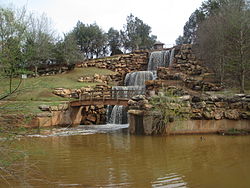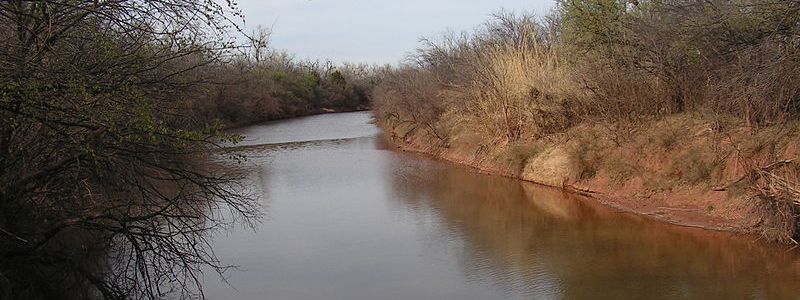| The Wichita River, in the
Red River basin, heads in
three branches. The North Fork rises six miles east of East Afton in
northeastern Dickens County and flows east 100 miles through
northwestern King, southern
Cottle, and southern
Foard counties to meet
the South Fork and form the Wichita River proper in northeastern
Knox
County. The Middle Fork rises in north central King County and flows
northeast thirty-five miles to join the North Fork in southwestern Foard
County. The South Fork rises in eastern Dickens County and flows east
through King and Knox counties for about 100 miles to its confluence
with the North Fork near the Knox-Baylor county line in northeastern
Knox County. From the junction of its headstreams the Wichita River
flows northeast across northern Baylor, northwestern
Archer, southern
Wichita, and northwestern
Clay counties for ninety miles to join the Red
River just west of the Byers bend in northern Clay County. The river
passes through the city of Wichita Falls, which was named for a
five-foot waterfall that subsequently washed away. The Wichita is dammed
in Archer County to form Diversion Lake, which stretches back into
eastern Baylor County, and in central Baylor County to form Lake Kemp.
There are also two small reservoirs on the Wichita in Wichita County;
one, with a capacity of 292 acre-feet, supplies water for the town of
Iowa Park; the other, with a capacity of 554 acre-feet, is owned by the
Gulf Production Company and used for irrigation. The river flows through
predominantly flat terrain where water-tolerant hardwoods, mesquite, and
grasses cover clay loam and sandy loam soils. The Wichita was named for
the Wichita Indians. There was a large Indian village at the site of
present Wichita Falls as late as 1841, when the Texan Santa Fe
Expedition crossed the stream there. |





